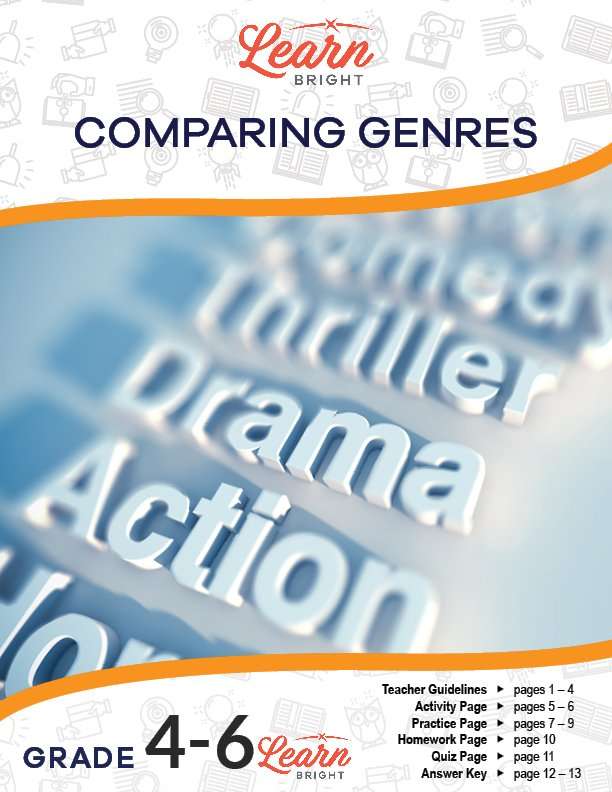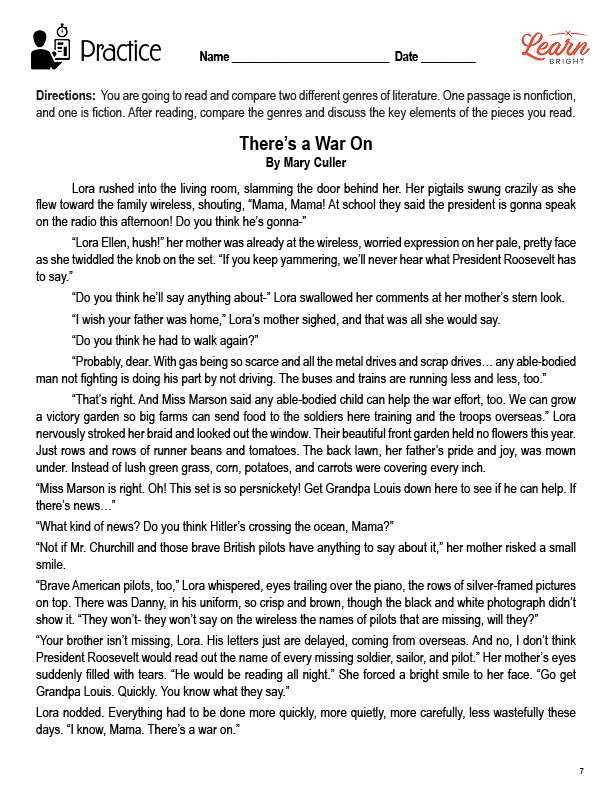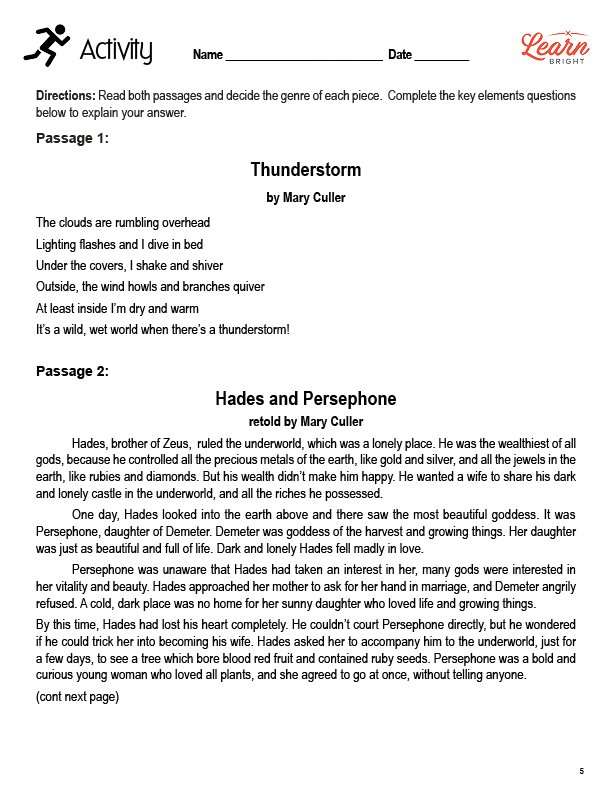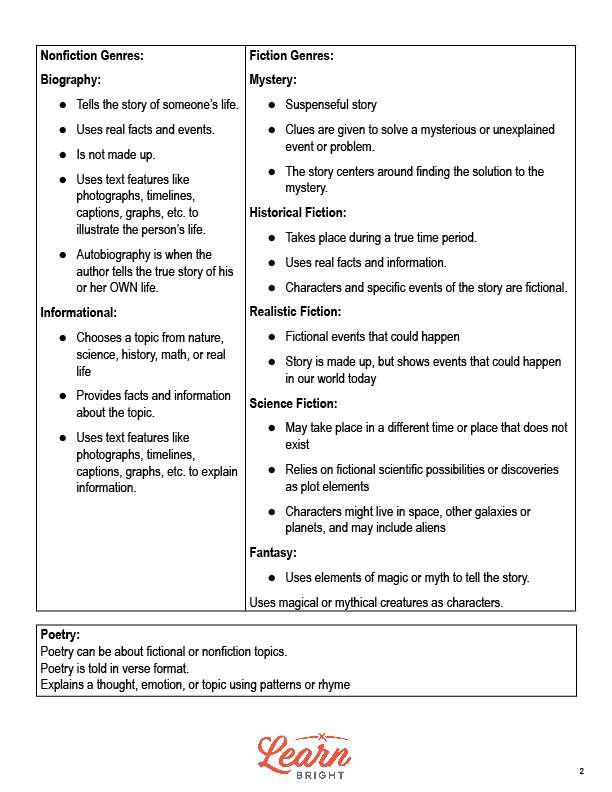Description
What our Comparing Genres lesson plan includes
Lesson Objectives and Overview: Comparing Genres enables students to identify, compare the key elements of, and synthesize different genres of literature. The lesson uses anchor charts to interactively explore and explain key definitions and elements for the major genres of fiction and nonfiction. At the end of the lesson, students will be able to identify, compare, and synthesize genres by reading, discussing, and writing various fiction and nonfiction genres. This lesson is for students in 4th grade, 5th grade, and 6th grade.
Classroom Procedure
Every lesson plan provides you with a classroom procedure page that outlines a step-by-step guide to follow. You do not have to follow the guide exactly. The guide helps you organize the lesson and details when to hand out worksheets. It also lists information in the orange box that you might find useful. You will find the lesson objectives, state standards, and number of class sessions the lesson should take to complete in this area.
Teacher Notes
The teacher notes page includes a paragraph with additional guidelines and things to think about as you begin to plan your lesson. It notes that being able to distinguish between common genres is a great skill for students to have as they get older. Exposure to different genres is a great way for them to expand their understanding of literature. This page also includes lines that you can use to add your own notes as you’re preparing for this lesson.
COMPARING GENRES LESSON PLAN CONTENT PAGES
The Comparing Genres lesson plan does not include any content pages. Rather, it provides a very detailed lesson plan, found on the three Classroom Procedure pages. One page of this lesson plan is an anchor chart that lists nonfiction genres and some details about them on the left, and fiction genres with some details on the right. The nonfiction genres that it includes are biography and informational. The fiction genres are mystery, historical fiction, realistic fiction, science fiction, and fantasy. There is also a small box for poetry at the bottom of the page.
COMPARING GENRES LESSON PLAN WORKSHEETS
The Comparing Genres lesson plan includes four worksheets: an activity worksheet, a practice worksheet, a homework assignment, and a quiz. You can refer to the guide on the classroom procedure pages to determine when to hand out each worksheet.
TWO PASSAGES ACTIVITY WORKSHEET
The activity worksheet asks students to read two passages and determine the genre of each. They will then answer questions about both passages. The questions ask what the genre is and what key elements prove that it’s that genre.
GENRE COMPARISON PRACTICE WORKSHEET
For the practice worksheet, students will read and compare two different genres of literature (one of the passages is nonfiction and one is fiction). They will then compare the two genres and discuss some of the key elements of both pieces. They must identify the specific genre within the category (nonfiction or fiction) and then list the key elements helped them determine the genre.
SHORT STORY HOMEWORK ASSIGNMENT
The homework assignment asks students to choose two different genres and write a short story for each one. They will use a provided planning sheet to help them create the stories, where they must determine what two genres they’re going to use and what the key elements of those genres are. They will complete the stories on a separate sheet of paper and will share one of the stories aloud during class. Their classmates will then have to determine what genre they used.
COMPARING GENRES QUIZ
The lesson includes a quiz. Students must answer questions about comparing genres. They must also complete a fiction genre chart by filling in the key elements for each genre listed. The genres are mystery, historical fiction, realistic fiction, science fiction, and fantasy.
Worksheet Answer Keys
This lesson plan includes answer keys for the activity worksheet and the quiz. No answer keys are provided for the practice worksheet or homework assignment, as students’ answers will vary. If you choose to administer the lesson pages to your students via PDF, you will need to save a new file that omits these pages. Otherwise, you can simply print out the applicable pages and keep these as reference for yourself when grading assignments.










